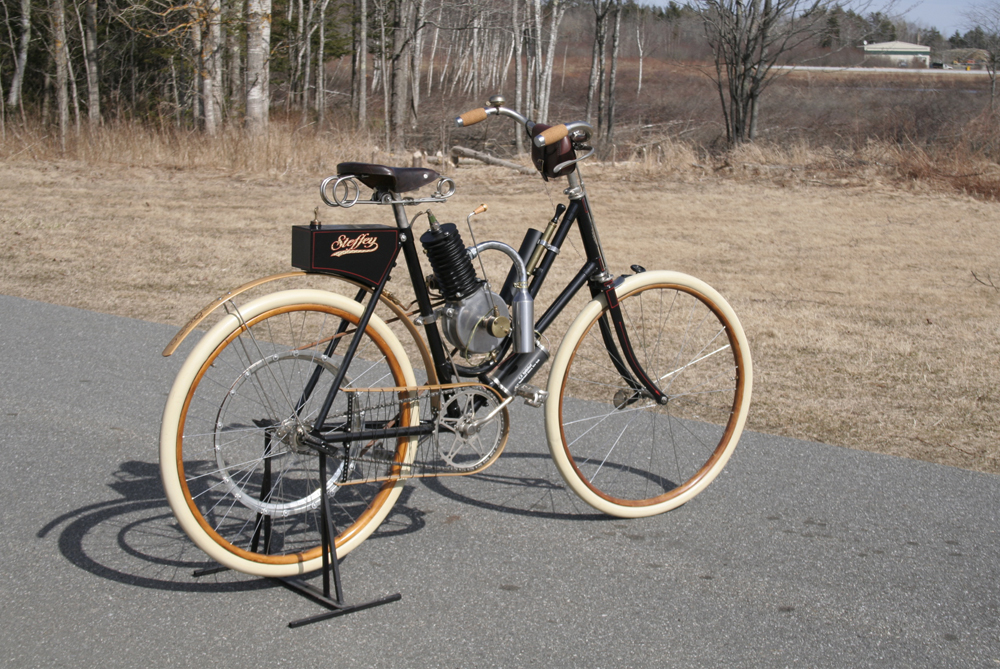1901 Steffey Motor-Bicycle








Description
By 1901, the bicycle as we recognize it had been established for a little more than a decade. The “safety” bicycle, with its equally sized wheels, and chain drive had become the standard of bicycle design by the early 1890s and the internal combustion engine was slowly emerging from its cocoon of public loathing and fear to become…
By 1901, the bicycle as we recognize it had been established for a little more than a decade. The “safety” bicycle, with its equally sized wheels, and chain drive had become the standard of bicycle design by the early 1890s and the internal combustion engine was slowly emerging from its cocoon of public loathing and fear to become an accepted form of motive power. These two technologies were first combined in 1885 by Gotleib Daimler, who was testing an engine intended for his forthcoming automobile. Motorcycles were being produced in Europe in the 1890s, but it was not until 1901 that motorcycles as such were produced in the United States. At the turn of the 20th Century, motorcycles were conversion kits, where the consumer purchased a bicycle and engine separately, and assembled the motorcycle himself. It is clear that this beautiful vehicle started its existence as a simple bicycle, but the Steffey Manufacturing Company, and many like it, turned the bicycle into much more.
This motorcycle is named after the maker of the motor, the Steffey Manufacturing Company of Philadelphia, Pennsylvania, which produced engines during the early 1900s. The motor is mounted to the frame of an 1897 Hartford bicycle, built by the Harvard Cycle Company in Hartford, Connecticut. The drive system consists of a large pulley mounted to the rear wheel, connected to the engine by a leather belt.
